Nuru Project is teaming up with
Vancouver for Acumen on the
Dignity Vancouver Photography Exhibition & Auction on Thursday, May 5th.
Dignity Vancouver is the eighth in a series of Dignity photography auctions around the world that have been attended by over 1,100 people and raised more than $98,000 for
Acumen Fund.
Tickets for the event can be purchased
here.
Visit the Facebook event page
here.
Preview the auction images below:

A man embraces the corner of a Sufi shrine in the city of Multan, Pakistan. Multan is known as the City of Sufis or City of Saints due to the large number of shrines and Sufi saints located there. The tiny shrine in this image does not attract the large number of visitors that the famous central Mosques do, but hidden off in a quiet dilapidated neighborhood it made for a beautiful image with only the birds and its humble caretaker. This image is part of a larger series I did on Sufism in Pakistan to highlight the mystical branch of Islam known for peace, love, and poetry instead of violence, extremism, and sectarian conflict.
I was in the Swat Valley documenting the aftermath on conflicts there when the floods hit at 9pm on July 28, 2010 following 48 hours of monsoon rains. Travelling along a road running beside the Swat River, our car was quickly overwhelmed by the fast flowing waters. In the darkness, we could see people being washed away moments after the banks burst. Joining hundreds of others in the pouring rain, myself and my translator sought out the high ground of a bridge. The bridge collapsed just an hour later. We were lucky to have survived.
For many there was no escape. That night over 1000 people were killed as the deluge came from the mountains without warning. Residents were more terrified by the waters than they had ever been under the Taliban.
Trapped on the far side of the Swat River with no water, electricity or communications, we initially had little idea of the magnitude of the situation. The following morning we joined an exodus of spectators with umbrellas, making our way along an eroded mountain road to catch sight of the river below us that had transformed into a sea. The road we’d driven the previous evening was under 10 metres of water. Whole villages had been washed away. A few kilometres further along the pass we came across a funeral as bereaved families in Swat began burying their dead even as the waters continued to rise. A year after conflict left the valley in ruins, the landscape had completely changed once again.
It took us 4 days to escape, trekking over mountains with only the clothes on our backs. The roads and villages I had become so familiar with now looked like the bed of an ocean. Those stranded were risking their lives to cross fast flowing tributaries using ladders and rubber tubes, while the injured were being ferried on charpois in the vain hope of reaching hospitals now inaccessible.
To this day, many areas of the Swat Valley are still cut off and have been left without essential services. As flood waters continued to swamp Pakistan over the following two months, they left over 20 million people affected across 5 provinces. Most have been left homeless, having lost everything. Support is still badly needed. Disease and hunger are rife across the now devastated country. People simply do not have the capacity to rebuild their lives after one of the world’s worst environmental disasters.
The image was taken along the river Ganges, considered as one of the holiest places for Hindus and Buddhists in the city of Varanasi, India.
In this image a lone woman holds up a victory sign and stands in solidarity with Justice Chaudhry, Chief Justice of the Pakistani Supreme Court, who was suspended from office by President Musharraf on March 9, 2007. President Musharraf’s actions sparked widespread protests in Pakistan. Justice Chaudhry was reinstated on July 20, 2007.
Africa’s largest slum, Kibera, is home to one million people living in less than a square mile on the outskirts of Nairobi, almost entirely in one-room stick-and-mud shacks. Kibera is a microcosm of many of the world’s most vexing issues – poverty, poor healthcare, severe water shortage, the spread of HIV infection, and lack of women’s rights.
This image is a snapshot taken on the railway tracks that run through Kibera. A mother and child passed and I just shot the picture on pure instinct. I never talked to them or thought that I had taken an important image. It is one of those rare moments in photography that turns into magic.
An internally displaced girl from the Swat valley laughs as her pot is filled with water in the Jalozai UNHCR IDP relief camp near Peshawar.
Approximately 3 million internally displaced persons (IDPs) have been created as a result of an on-going military operation against the Taliban. The refugees are facing extremely harsh living conditions including searing heat in over crowded camps.
Worshippers attend Friday prayers at a collapsed mosque. On October 8th, 2005, a 7.6 magnitude earthquake hit the area around Balakot, Pakistan, killing over 80,000 people. Three months after the massive quake, survivors were struggling to stay alive in the cold weather with millions living in tents not designed to cope with the extreme temperatures.
Chairman George Gachie scratched the following quote across the blackboard at the weekly Maji Mazuri Youth Group meeting in Nairobi’s Mathare Valley slums:
They will never see your struggle.
All they’ll see is your trouble.
Access to peer counseling, leadership opportunities, a social network, and academic scholarships are among the incentives that encourage slum youths to join the group. In turn, members give back to their community through periodic clean-up projects and public programs such as concerts and health education dramas.
George’s quote reminds me of what defines this group – an unrelenting desire to confront their situation and improve their lives. The group persists on a sense of community, youthful optimism, and the steely resilience unique to people raised in such challenging circumstances.
Violence fueled by superstition, skin cancer from the hot equatorial sun, and prejudice due to their differing skin color are all challenges faced by albinos in Tanzania. Yet, in the midst of such solitude, laughter and a spirit of hope can still be found. Albino people in Tanzania are organizing and refusing to let violence against them continue. They are demanding action from the government and the government has begun to take notice.
This image is part of a series of class portraits taken at the Ashray School in Nagwa, a small village near Varanasi, India. Nagwa is home to migrants and “caste-less” families, a place where poverty is the only option. The Ashray School was created to give these families the opportunity for an education. Through portraiture and documentary work I focus not only on individual stories, but also the stories of this village as a changing community, witnessing the lives of these young children developing through the simple act of receiving an education.
Renu Regina Masiaine, 15, poses for a portrait inside her classroom at the Tasaru Safehouse for Girls. Tasaru Safehouse provides board, lodging and education to teenage Maasai girls seeking refuge from female circumcision and early marriage. In 2001, the Kenyan government passed the Children’s Act, which highlights the right of a child to receive an education. It also issues a ban on what is now referred to as Female Genital Mutilation (FGM) and marriage below 18 years. News of the recent law has not reached many in the rural and remote areas of the Rift Valley.
In Maasai culture, Regina is considered an orphan because her father died when she was a baby. Her older brother, who follows the father as the final decision maker in the family, will decide her fate. In Maasai culture, women are considered property or juveniles incapable of making decisions for themselves. Thus, when Regina expressed to her brother her desire to continue her schooling, he advised her to take refuge at Tasaru where she would no longer be under the reach and jurisdiction of her uncles, who they believed planned on having her circumcised and married off. When asked to name her most valuable object, she came up with none. She did, however, name a treasured space: the classroom.
A line of people fleeing an internally displaced person camp following disputed election results which sparked ethnic violence.
A man throws pink powder as tens of thousands of Indians celebrate Holi, the festival of colors, at a temple in Nadagaon, India. Thousands of gallons of colored water and powder are thrown at participants as they sing and dance. Holi is celebrated for 16 days in commemoration of the Hindu deity Lord Krishna’s love for Radha. The celebrations officially usher in spring, the celebrated season of love.

Palani Mohan/Reportage by Getty Images. India. 2009.
A fisherman pulls in his early morning catch on Marina beach in Chennai in southern India, the place of my birth. I’ve been photographing this beach for the past 15 years so I’ve seen lots of change, a reflection of what’s happening all over India. Its a relentless hard existence for these fisherman. There is no doubt that the new found economic explosion in the country have left these people behind. This image was part of chapter in my book “Hidden faces of India” published in 2002.
Noluyanda Mqutwana strikes a pose outside her small family house in Khayelitsha, near Cape Town. Noluyanda is one of about 200 unprivileged children dancing ballet in a program called Dance For All. Many children are talented and the discipline taught during the dance classes has helped many to improve their concentration in school. The township is struggling with high unemployment, crime and high levels of HIV/Aids.
Women and children gathered at dusk in a camp for survivors of a massive earthquake that killed 80,000 and displaced some 3.5 million survivors.
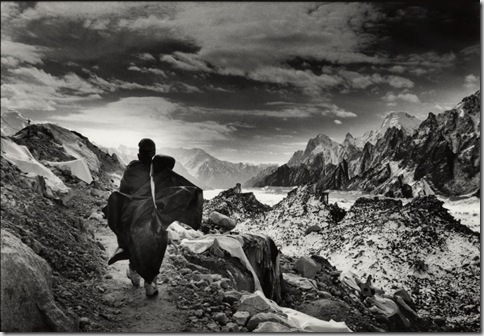
Teru Kuwayama/Basetrack. Siachen Glacier, Kashmir. 2002.
An Indian soldier carries a frozen sheet of plastic tarp across a military outpost on the world’s largest alpine glacier. Surrounded by the world’s highest mountain peaks, the Siachen glacier is the world’s coldest and highest battlefield, with soldiers occupying positions up to 23,000 feet about sea level, and temperatures dropping to 50 degrees below zero.
A Changpa nomad boy plays with flowers while watching his flock.

Tomas Munita. India. 2008.

Zackary Canepari. India. 2009.
Many of the residents in the Kathputli Colony own animals such as snakes, monkeys and pigeons, which are used for performances. The father of Magician Hameed taught his son his entire magic repertoire during Hameed’s youth. The majority of the performers in the colony are 3rd or 4th generation professional performing artists
Copyright © 2010
Nuru Project
http://nuruproject.org/2011/04/dignity-vancouver-full-preview/
Ed è stato un successo…


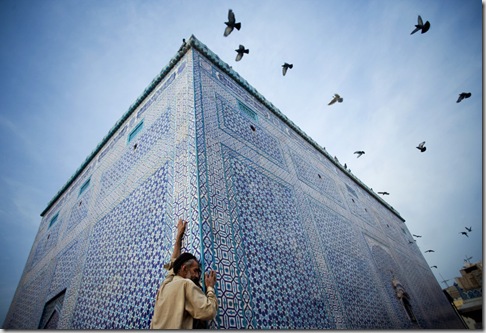







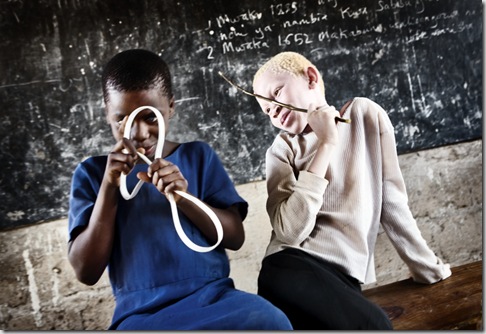
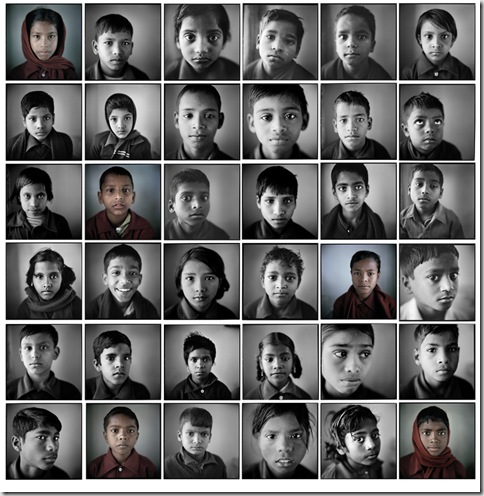




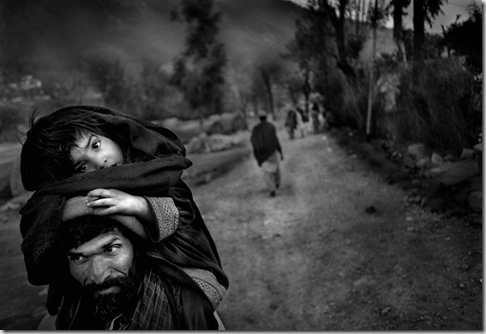







Nessun commento:
Posta un commento